Blogs
Ground Cover Plants in the Aquarium: A Guide to Creating Stunning Underwater Landscapes
Ground cover plants are a crucial element in creating visually stunning aquascapes, providing a dense and lush carpet-like effect that mimics the beauty of nature. Understanding their characteristics and proper maintenance techniques is essential for achieving successful ground cover in aquarium settings.
1. Importance and Functions
- Enhanced Aesthetics: Ground cover plants create a green tapestry that adds color and texture, enhancing the visual appeal and naturalism of aquascapes.
- Depth and Impression: Dense ground covers create an illusion of depth and perspective within the aquarium, making it appear larger and more profound.
- Habitat Simulation: By emulating the vegetation found on forest floors and riverbeds, ground covers provide habitats for aquatic microorganisms, adding ecological diversity.
- Nutrient Absorption: Ground covers act as a natural filtration mechanism by absorbing excess nutrients and preventing algae growth.
- Anchorage: Their dense root system helps anchor other aquarium plants, providing stability to the overall ecosystem.
2. Types and Considerations
- Texture and Color: Select ground covers based on their texture (fine-stalked, broad leaves, clover-like) and color (light, dark, reddish) for visual contrast and interest.
- Growth Habits: Consider growth speed, propagation method (runners, rhizomes), and height to prevent overgrowth or shading.
- Matching Aquascape Style: Different ground covers suit specific styles, such as fine-leaved species for Iwagumi layouts and cushion-shaped ones for Dutch-style aquascaping.
3. Popular Ground Cover Species
Dwarf Baby Tears (Hemianthus callitrichoides “Cuba”)
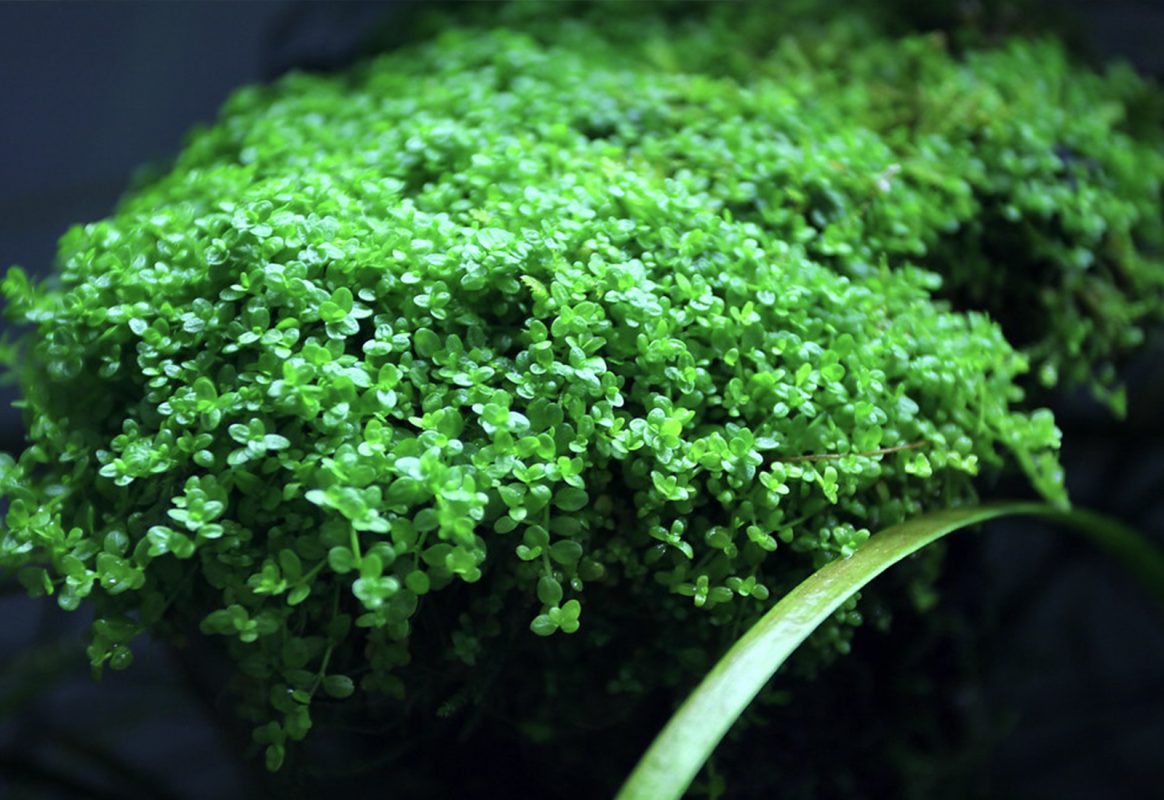
- Appearance: Miniature bright-green leaves with a creeping growth pattern.
- Benefits: Creates dense carpets, ideal for foreground planting and slopes.
- Requirements: Demanding light, nutrient-rich substrate, CO2 supplementation.
Glossostigma elatinoides (Mud Mat)
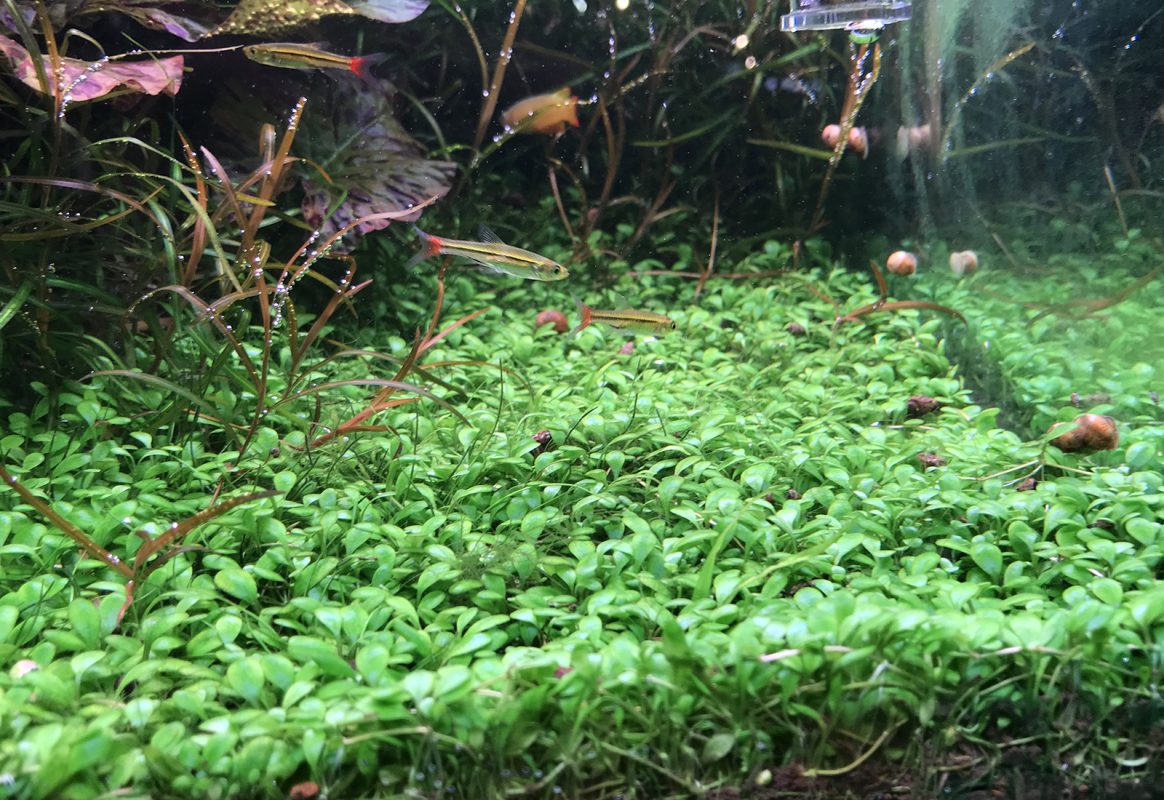
- Appearance: Low, compact rosettes of dark-green leaves, resembling a plush mat.
- Benefits: Easy-to-care for, forms a flat, even carpet, suppresses algae.
- Requirements: Moderate lighting, good substrate, occasional CO2 addition.
Eleocharis sp. “Mini” (Mini Hairgrass)
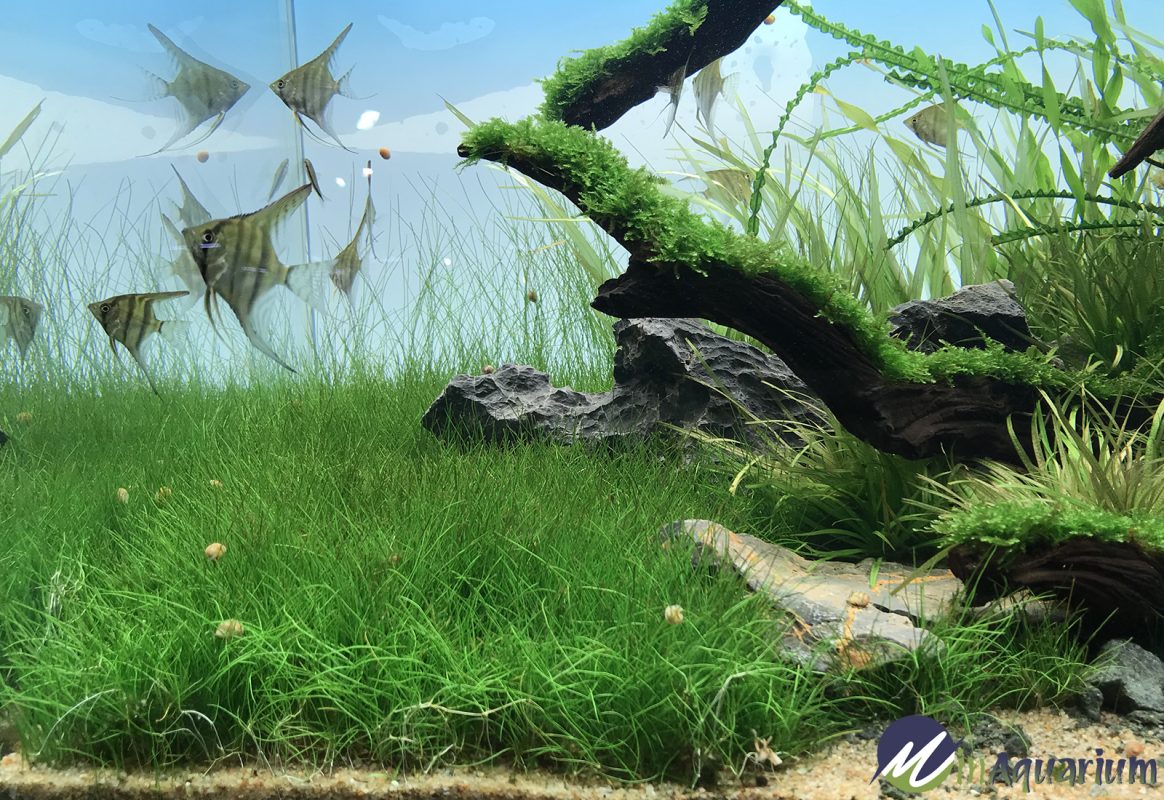
- Appearance: Fine, hair-like stems with bright-green coloration, forming a dense, lush carpet.
- Benefits: Durable, creates an ethereal meadow-like effect, adapts well to various conditions.
- Requirements: Moderate lighting, adequate nutrients and CO2 supply.
Helanthium spp. (Chain Sword Plants)
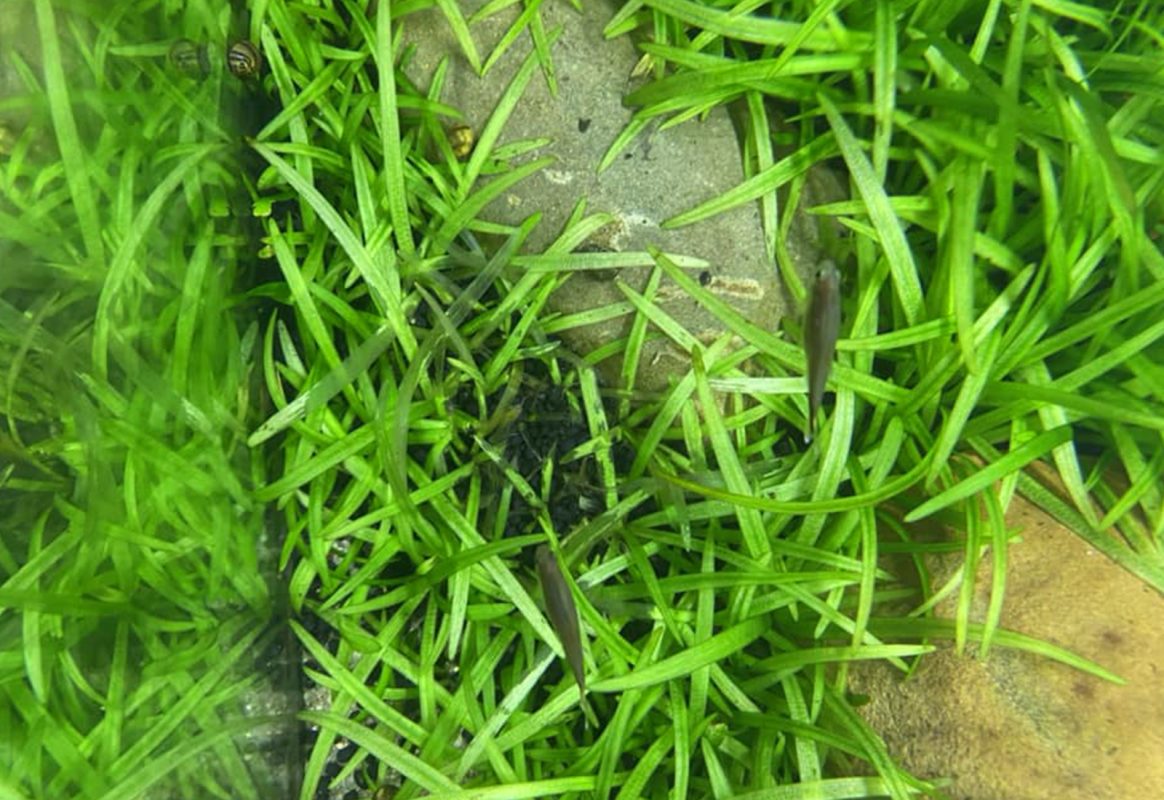
- Appearance: Chain-like stems with narrow, elongated leaves, ranging from green to reddish hues.
- Benefits: Fast-growing, versatile species that can create dense carpets or form background layers.
- Requirements: Bright lighting, fertile substrate, CO2 supplementation for optimal appearance.
Marsilea spp.
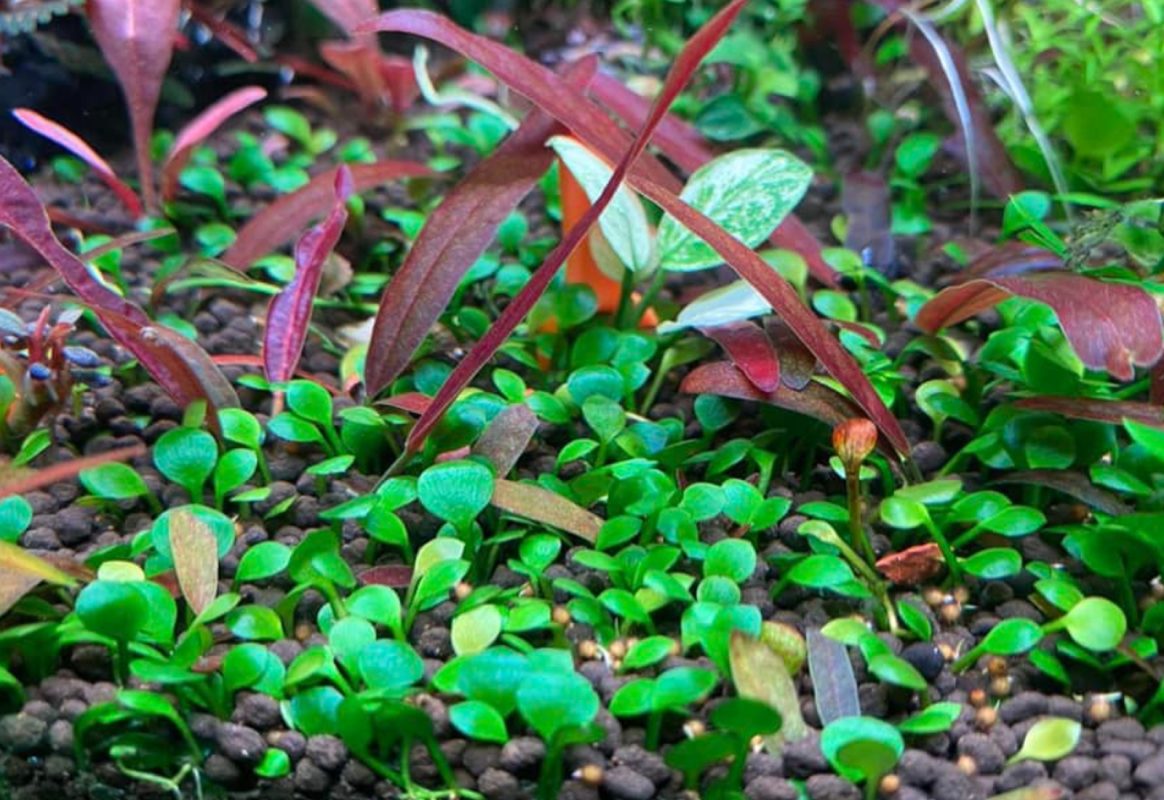
- Appearance: Resembles a small clover with dark-green leaves, forming dense cushions or runners.
- Benefits: Easy to cultivate, adapts to low-light conditions, adds depth and texture to foreground.
- Requirements: Prefers soft water with neutral to slightly acidic pH.
4. Planting and Maintenance
- Substrate Preparation: Use a nutrient-rich substrate, ensuring sufficient aeration for proper root development.
- Planting Technique: Dig small holes or trenches, gently place the ground cover plants in clusters or rows.
- Light Conditions: Provide adequate lighting for the specific species’ needs, avoiding direct sun or excessive shading.
- CO2 and Fertilization: Most ground covers require CO2 and regular fertilization for healthy growth and appearance.
- Trimming: Regular pruning is necessary to prevent overgrowing and maintain the desired shape and density of the carpet.
- Maintenance Tools: Invest in proper tools, such as planting tweezers and specialized scissors, for precise maintenance and trimming tasks.
5. Nutrient Supply
- Balancing Nutrients: Ensure a proper supply of macro- and micronutrients, such as nitrogen (NO3), potassium (K), iron (Fe), and magnesium (Mg), through fertilization.
- Monitoring and Adjustments: Regularly monitor water parameters and adjust nutrient levels as needed based on plant requirements and growth performance.
- Substrate Quality: Choose a nutrient-rich substrate for optimum root absorption and overall plant health.
- CO2 Supplementation: CO2 is essential for photosynthesis and plant growth, especially in dense ground cover carpets where it can become a limiting factor.
- Organic Supplements: Consider using organic supplements to provide natural sources of nutrients and stimulate root development.
6. Troubleshooting and Pest Control
- Yellowing Leaves: Indicates iron or magnesium deficiency, adjust fertilization accordingly.
- Melting Plants: Overcrowding, insufficient nutrients or lighting, address the underlying issues promptly.
- Algae Problems: Excessive nutrients or lighting can lead to algae blooms, adjust light intensity and nutrient supply, consider algaecides as a last resort.
- Infestations: Ground covers can be susceptible to pests like snails or shrimp, use physical removal, traps or natural predators for pest control.
- Diseases: Fungal or bacterial infections can spread through ground covers, quarantine infected plants, treat with medication if severe, ensure good water quality.
- Deficiency Symptoms: Observe plants for signs of specific nutrient deficiencies (e.g. yellowish leaves for iron or magnesium) to make appropriate adjustments to fertilization.
7. Aquarium Styles
- Minimalist Landscapes: Ground covers are essential in creating a foreground carpet for minimalist aquascapes like Iwagumi, emphasizing naturalism and space.
- Dutch Style Aquascaping: Use contrasting colors and textures of different ground covers to achieve depth and visual complexity in Dutch-style arrangements.
- Natural Biotope Aquascapes: Choose ground cover species that resemble those of specific ecosystems, such as Glossostigma for South American biotope or Marsilea for Asian ones.
8. Advanced Techniques
- Carbonaceous Substrate: Using specialized soil substrates can create an ideal environment for ground covers, providing continuous nutrient supply and reducing the risk of deficiencies.
- Hydroponic Systems: Cultivating ground cover plants in a nutrient-rich water column without substrate offers greater control over nutrient availability.
- Tissue Cultured Plants: Using laboratory-cultured plants ensures genetic consistency, faster growth, and fewer pests when establishing a dense carpet.
Conclusion: Enhancing the Aquascape’s Beauty and Ecology
Ground covers are a vital aspect of any well-maintained aquarium, transforming it into a thriving mini-ecosystem. By understanding their importance, selecting the appropriate species, providing adequate care, and utilizing advanced techniques, you can create a stunning and natural-looking aquatic landscape that enhances your aquarium’s aesthetics, promotes biodiversity, and brings a touch of nature indoors.

